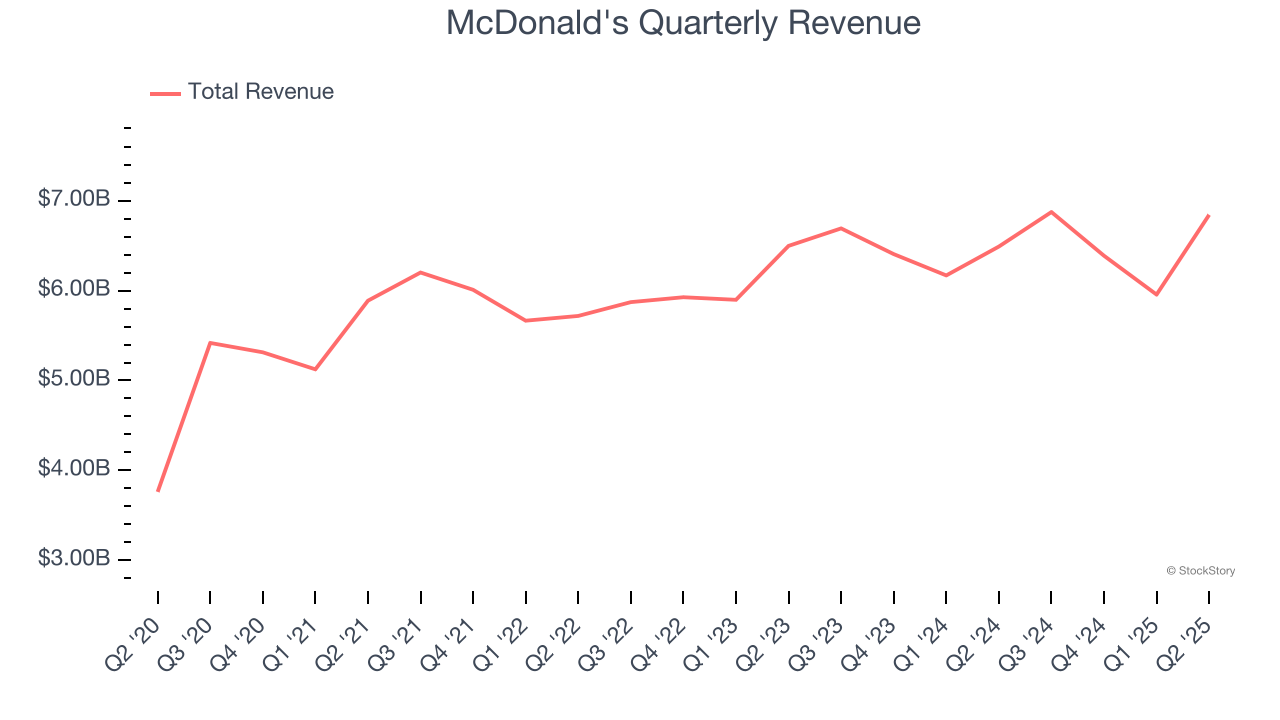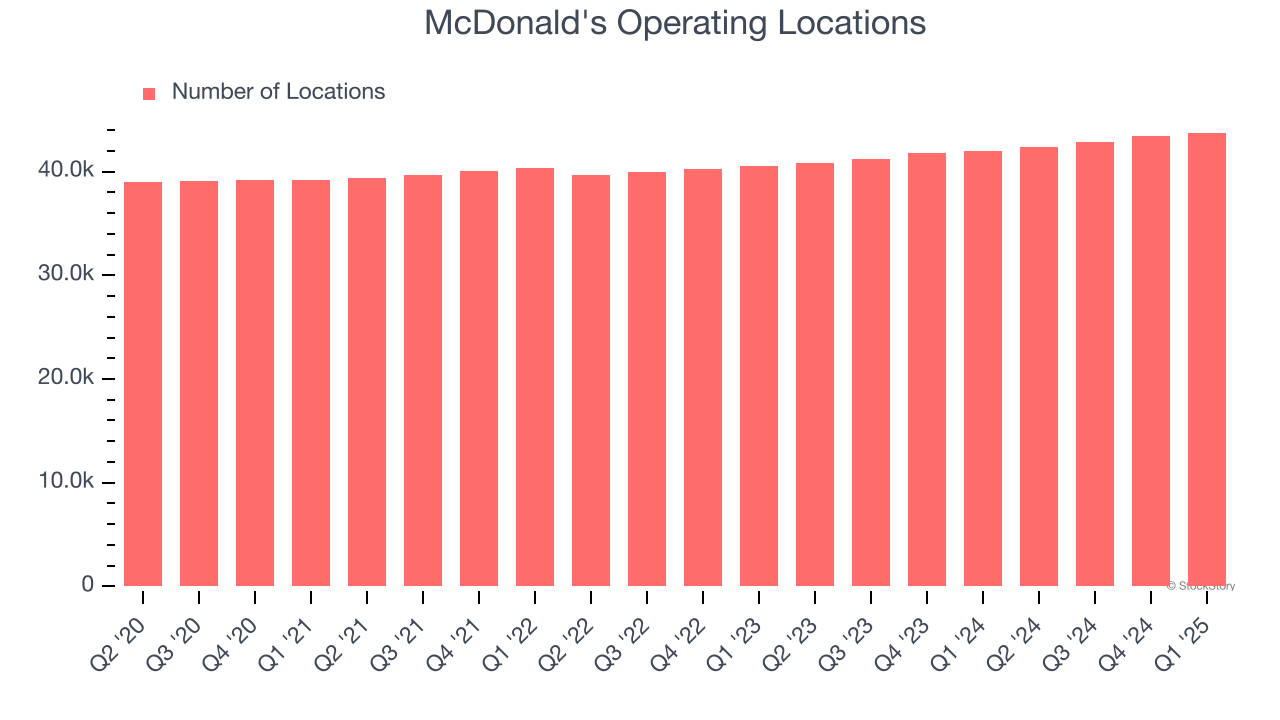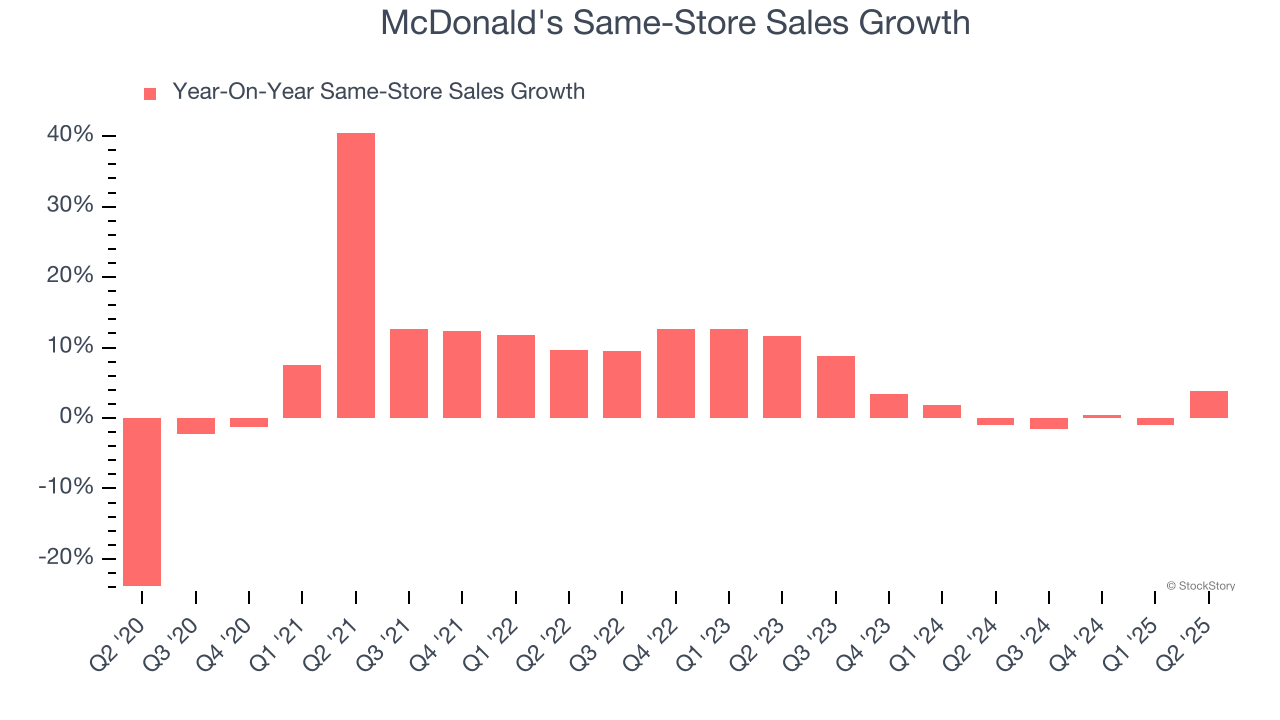
Fast-food chain McDonald’s (NYSE: MCD) beat Wall Street’s revenue expectations in Q2 CY2025, with sales up 5.4% year on year to $6.84 billion. Its non-GAAP profit of $3.19 per share was 1.3% above analysts’ consensus estimates.
Is now the time to buy McDonald's? Find out by accessing our full research report, it’s free.
McDonald's (MCD) Q2 CY2025 Highlights:
- Revenue: $6.84 billion vs analyst estimates of $6.69 billion (5.4% year-on-year growth, 2.3% beat)
- Adjusted EPS: $3.19 vs analyst estimates of $3.15 (1.3% beat)
- Operating Margin: 47.2%, up from 45% in the same quarter last year
- Same-Store Sales rose 3.8% year on year (-1% in the same quarter last year)
- Market Capitalization: $213.6 billion
"Our 6% global Systemwide sales growth this quarter is a testament to the power of compelling value, standout marketing, and menu innovation—proving again that when we stay focused on executing what matters most to our customers, we grow," said Chairman and CEO Chris Kempczinski.
Company Overview
With nicknames spanning Mickey D's in the U.S. to Makku in Japan, McDonald’s (NYSE: MCD) is a fast-food behemoth known for its convenience and broken ice cream machines.
Revenue Growth
A company’s long-term sales performance is one signal of its overall quality. Even a bad business can shine for one or two quarters, but a top-tier one grows for years.
With $26.06 billion in revenue over the past 12 months, McDonald's is one of the most widely recognized restaurant chains and benefits from customer loyalty, a luxury many don’t have. Its scale also gives it negotiating leverage with suppliers, enabling it to source its ingredients at a lower cost. However, its scale is a double-edged sword because there is only so much real estate to build restaurants, placing a ceiling on its growth. To expand meaningfully, McDonald's likely needs to tweak its prices, start new chains, or enter new markets.
As you can see below, McDonald’s 3.8% annualized revenue growth over the last six years (we compare to 2019 to normalize for COVID-19 impacts) was sluggish as it barely increased sales at existing, established dining locations.

This quarter, McDonald's reported year-on-year revenue growth of 5.4%, and its $6.84 billion of revenue exceeded Wall Street’s estimates by 2.3%.
Looking ahead, sell-side analysts expect revenue to grow 4.5% over the next 12 months, similar to its six-year rate. This projection doesn't excite us and suggests its newer menu offerings will not catalyze better top-line performance yet. At least the company is tracking well in other measures of financial health.
Unless you’ve been living under a rock, it should be obvious by now that generative AI is going to have a huge impact on how large corporations do business. While Nvidia and AMD are trading close to all-time highs, we prefer a lesser-known (but still profitable) stock benefiting from the rise of AI. Click here to access our free report one of our favorites growth stories.
Restaurant Performance
Number of Restaurants
Over the last two years, McDonald's opened new restaurants at a rapid clip by averaging 3.8% annual growth, among the fastest in the restaurant sector. Furthermore, one dynamic making expansion more seamless is the company’s franchise model, where franchisees are primarily responsible for opening new restaurants while McDonald's provides support.
When a chain opens new restaurants, it usually means it’s investing for growth because there’s healthy demand for its meals and there are markets where its concepts have few or no locations.
Note that McDonald's reports its restaurant count intermittently, so some data points are missing in the chart below.

Same-Store Sales
A company's restaurant base only paints one part of the picture. When demand is high, it makes sense to open more. But when demand is low, it’s prudent to close some locations and use the money in other ways. Same-store sales provides a deeper understanding of this issue because it measures organic growth at restaurants open for at least a year.
McDonald’s demand within its existing dining locations has been relatively stable over the last two years but was below most restaurant chains. On average, the company’s same-store sales have grown by 1.9% per year. This performance suggests it should consider improving its foot traffic and efficiency before expanding its restaurant base.

In the latest quarter, McDonald’s same-store sales rose 3.8% year on year. This growth was an acceleration from its historical levels, which is always an encouraging sign.
Key Takeaways from McDonald’s Q2 Results
We enjoyed seeing McDonald's beat analysts’ same-store sales expectations this quarter. We were also glad its revenue outperformed Wall Street’s estimates. EPS beat as operating margin increased year on year, showing some operating efficiencies. Overall, this print had some key positives. The stock traded up 3.5% to $309.26 immediately after reporting.
So do we think McDonald's is an attractive buy at the current price? If you’re making that decision, you should consider the bigger picture of valuation, business qualities, as well as the latest earnings. We cover that in our actionable full research report which you can read here, it’s free.







